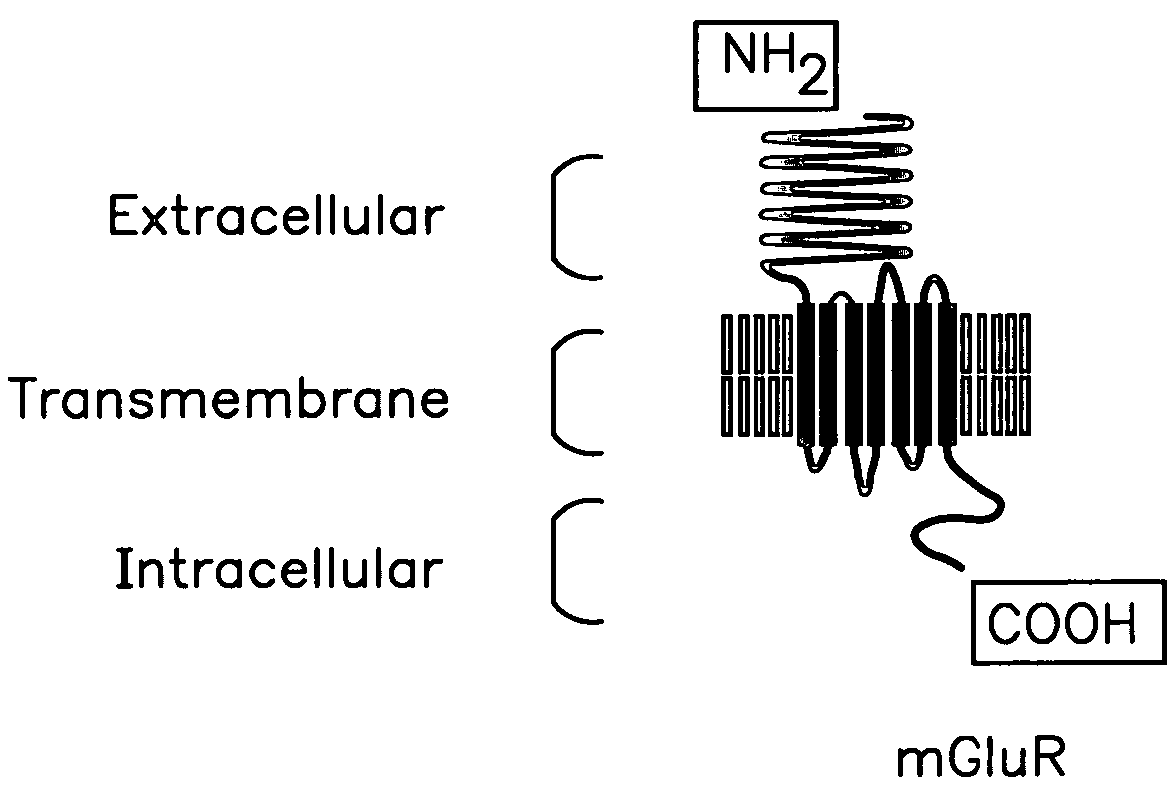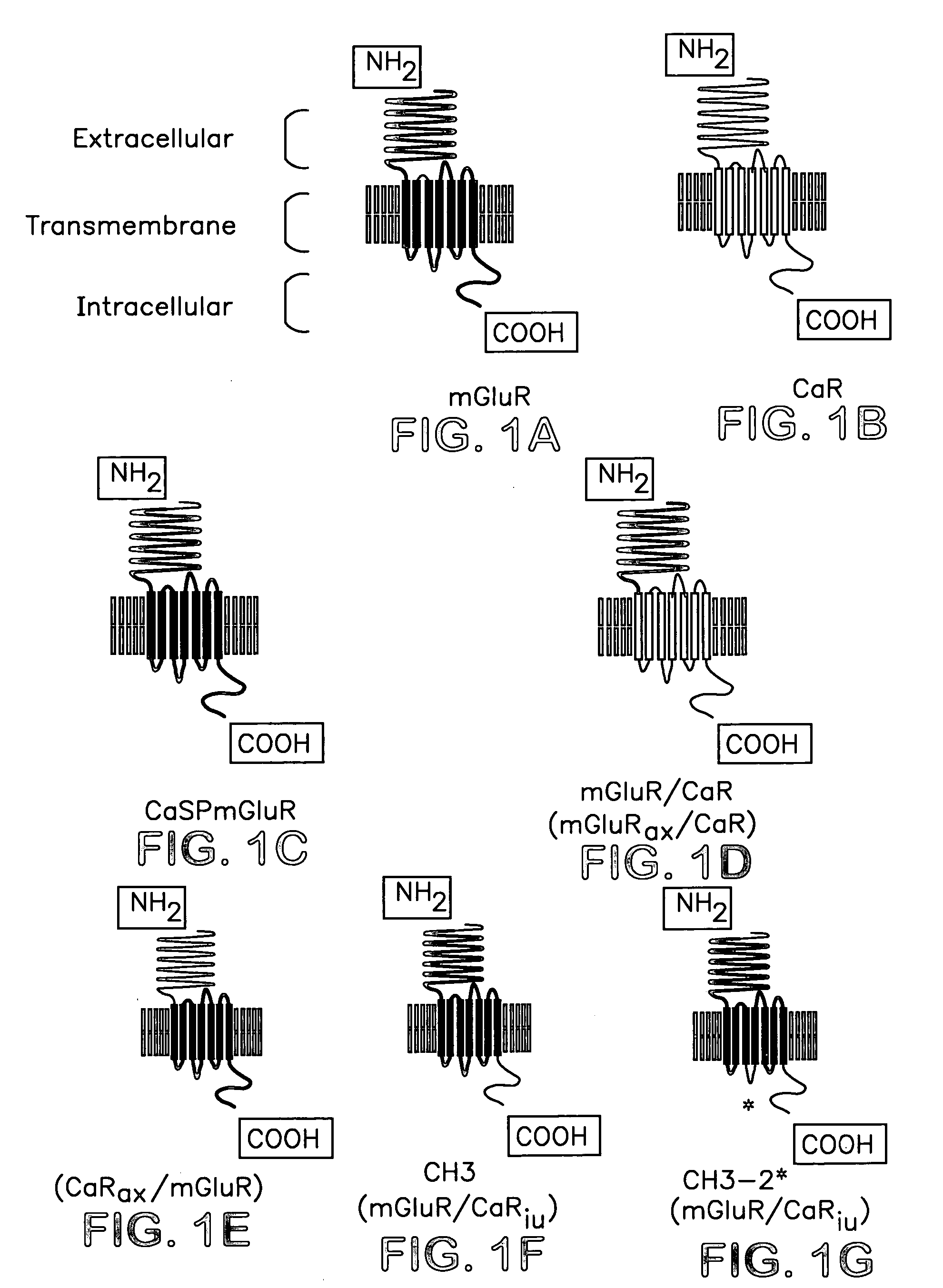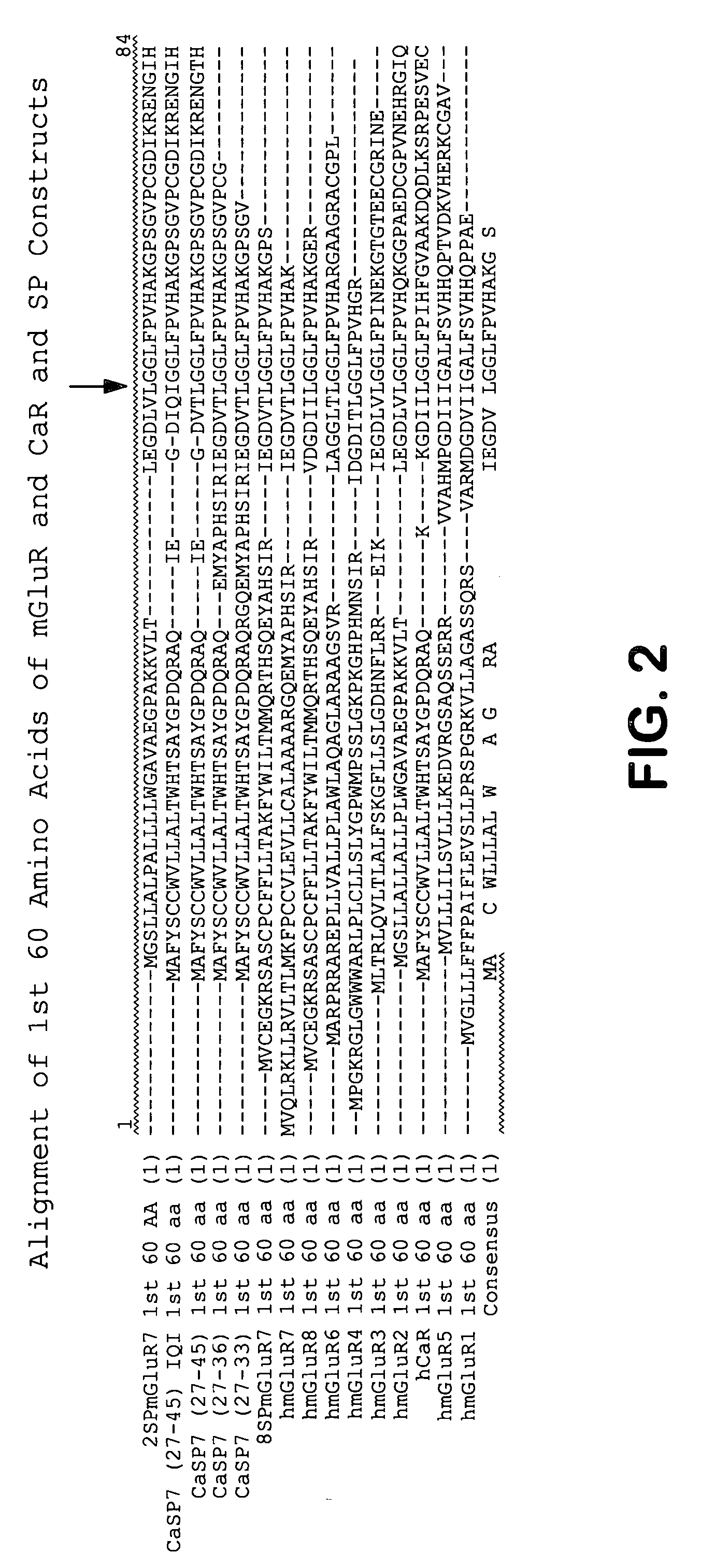Chimeric metabotropic glutamate receptors and uses thereof
- Summary
- Abstract
- Description
- Claims
- Application Information
AI Technical Summary
Benefits of technology
Problems solved by technology
Method used
Image
Examples
example 1
Functional Expression in Oocytes
[0278] Oocytes suitable for injection were obtained from adult female Xenopus laevis toads using procedures described in C. J. Marcus-Sekura and M. J. M. Hitchcock, Methods in Enzymology, Vol. 152 (1987). Pieces of ovarian lobe were incubated for 30 minutes in Ca2+-free Modified Barths Saline (MBS) containing 1.5 mg / ml collagenase type IA (Worthington). Subsequently, 5 ng of RNA transcript prepared as described below, were injected into each oocyte. Following injection, oocytes were incubated at 16° C. in MBS containing 0.5 mM CaCl2 for 2-7 days prior to electrophysiological examination.
[0279] RNA transcripts encoding the chimeric receptors, or the GIRK subunits described below, were produced by enzymatic transcription from plasmid templates using T7 polymerase supplied with the mMessage mMachine ™(Ambion). Each plasmid was treated with a restriction enzyme to make a single cut distal to the 3′ end of the cDNA insert to linearize the template. This ...
example 2
Transfection and Growth of HEK293 Cells to Express Chimeric Receptors
[0284] A. Lipofectamine™ 2000 Transfections
[0285] Human embryonic kidney cells (HEK293, ATCC, CRL 1573) were maintained and propagated in culture in a routine manner. 20×106 cells were plated in T150 cm2 cell culture flasks in Dulbecco's Modified Eagle's Medium (DMEM from Gibco Life Technologies) containing 10 % fetal bovine serum (FBS from Hyclone Laboratories) to attain a monolayer of 95% confluence in 48-hours. To prepare plasmid DNA for transfection, the cDNA was precipitated with ethanol, rinsed and resuspended in sterile water at a concentration of 1 μg / ul. Sixty-three μg of cDNA was incubated with 197.5 μl of the liposome formulation Lipofectamine™ 2000 transfection reagent (Invitrogen) for 20 minutes in 4 ml serum-free Opti-MEM™ (Gibco Life Technologies) at room temperature allowing for the formation of the DNA-Cationic lipid complex. Post incubation, the 4 ml of complex was added to 40 ml of Opti-MEM™ in...
example 3
Measuring Changes in Intracellular Calcium Caused by Activation of Chimeric Receptors by the Fura Assay
[0288] Measurements of intracellular calcium release in response to increases in extracellular calcium is quantitated using the Fura assay (Parks et al. 1989). Stably transfected cells containing chimeric receptors are loaded with 2 μM fura-2 acetoxymethylester by incubation for 20-30 minutes at 37° C. in SPF-PCB (126 mM NaCl, 5 mM KCl, 1 mM MgCl2, 20 mM HEPES, pH 7.4), containing 1.25 mM CaCl2, 1 mg / ml glucose, 0.5% BSA1. The cells are then washed 1 to 2 times in SPF-PCB containing 0.5 mM CaCl2, 0.5% BSA and resuspended to a density of 4 to 5 million cells / ml and kept at 22° C. in a plastic beaker. For recording fluorescent signals, the cells are diluted fivefold into a quartz cuvette with BSA-free 37° C. SPF-PCB to achieve a final BSA concentration of 0.1% (1.2 ml of 37° C. BSA-free SPF-PCB+0.3 ml cell suspension). Measurements of fluorescence are performed at 37° C. with consta...
PUM
| Property | Measurement | Unit |
|---|---|---|
| Fraction | aaaaa | aaaaa |
| Nucleic acid sequence | aaaaa | aaaaa |
Abstract
Description
Claims
Application Information
 Login to View More
Login to View More - R&D
- Intellectual Property
- Life Sciences
- Materials
- Tech Scout
- Unparalleled Data Quality
- Higher Quality Content
- 60% Fewer Hallucinations
Browse by: Latest US Patents, China's latest patents, Technical Efficacy Thesaurus, Application Domain, Technology Topic, Popular Technical Reports.
© 2025 PatSnap. All rights reserved.Legal|Privacy policy|Modern Slavery Act Transparency Statement|Sitemap|About US| Contact US: help@patsnap.com



